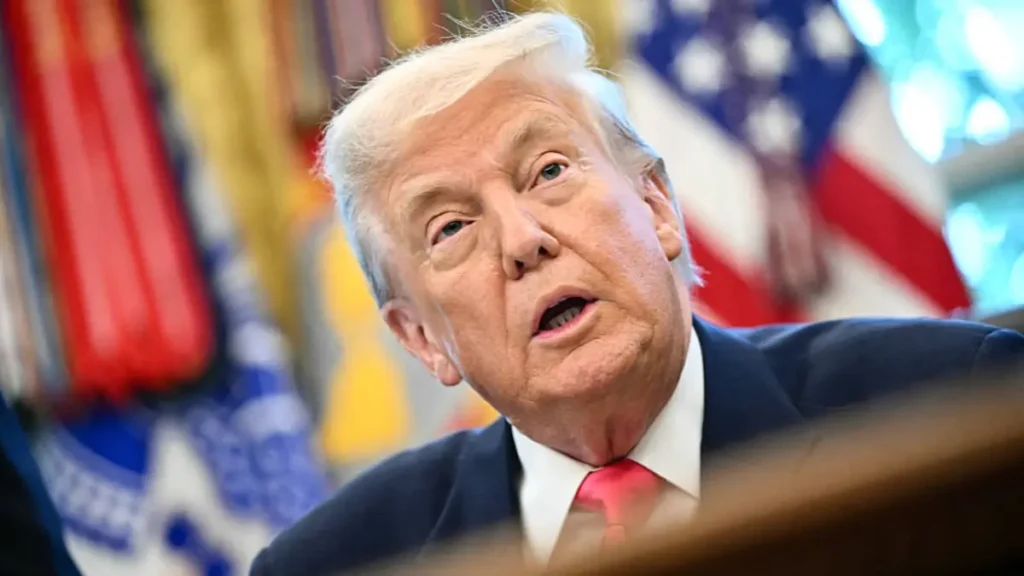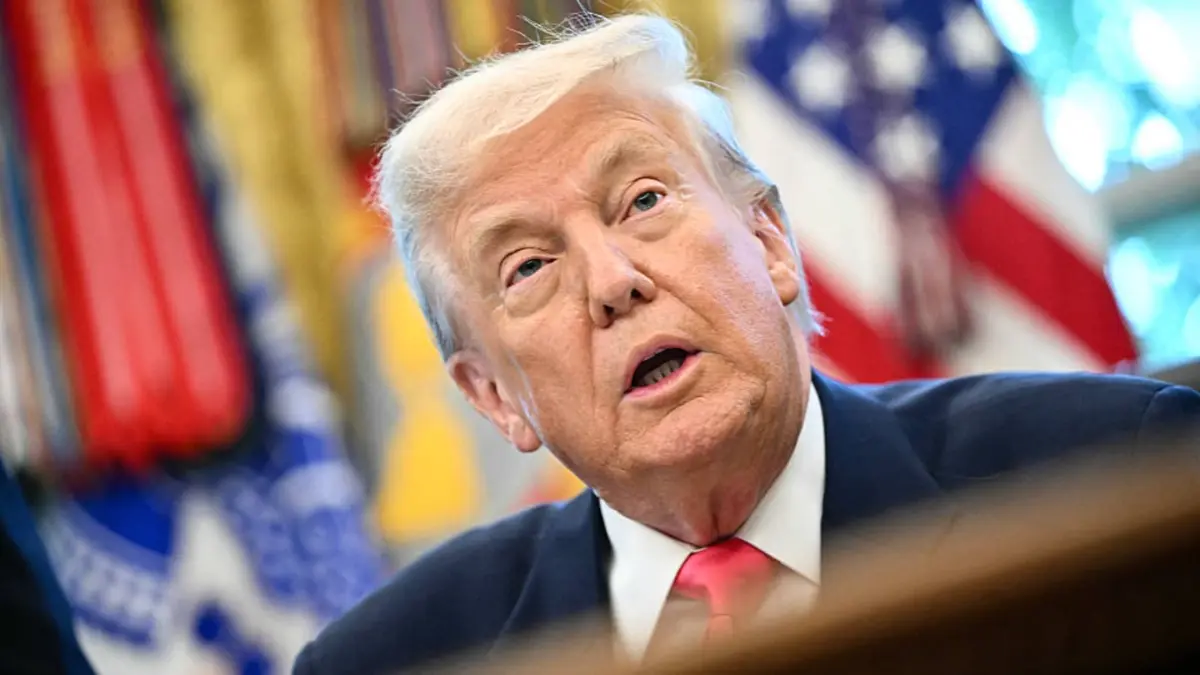Most Trump Tariffs Overturned by Court, dealing a blow to his trade strategy. Learn the legal, economic, and political implications of this major ruling.
Most Trump Tariffs Overturned by Court, Trade Strategy in Peril

Introduction
The U.S. trade landscape was shaken when a Most Trump Tariffs Overturned by Court ruling that the former president had overstepped his authority under the Constitution. This decision, delivered in V.O.S. Selections v. Trump, represents one of the most significant setbacks to Trump’s aggressive trade strategy.
With a 7-4 ruling, the Federal Circuit concluded that Trump’s broad use of the International Emergency Economic Powers Act (IEEPA) did not grant him unilateral authority to impose sweeping tariffs. This outcome directly challenges the foundation of his trade policy, which has been central to his political identity.
The ruling has not only legal but also economic and political consequences, raising questions about presidential powers, congressional authority, and the future of U.S. trade negotiations.
Key Facts About the Court Decision Most Trump Tariffs Overturned by Court
| Aspect | Details |
|---|---|
| Court | U.S. Court of Appeals for the Federal Circuit |
| Ruling | 7-4 decision overturning most Trump tariffs |
| Case Name | V.O.S. Selections v. Trump |
| Legal Basis Challenged | International Emergency Economic Powers Act (IEEPA) |
| Tariffs Affected | Reciprocal tariffs, trafficking tariffs, and global levies |
| Immediate Impact | Ruling paused until Oct. 14 for Supreme Court appeal |
| Plaintiffs | Coalition of states + small U.S. businesses |
| Trump’s Response | Called court “Highly Partisan,” vowed Supreme Court victory |
Why the Most Trump Tariffs Overturned by Court
The appeals court emphasized that tariffs are a core Congressional power under the U.S. Constitution. Trump had relied on IEEPA to justify his actions, but the judges found that the law did not provide him unlimited authority to levy tariffs on nearly all imports.
The decision highlighted that:
- The reciprocal tariffs and trafficking tariffs imposed by Trump were excessively broad.
- These tariffs applied to almost all countries and nearly all imports, with no time limits.
- Such actions exceeded presidential power and infringed on Congress’s constitutional authority to impose taxes.
In short, the court overturned most Trump tariffs because they represented an unconstitutional expansion of executive power.
Trump’s Reaction to the Ruling
Former President Trump strongly criticized the decision Most Trump Tariffs Overturned by Court, labeling the appeals court “Highly Partisan.” He asserted on Truth Social that if the tariffs were removed, it would be a “total disaster for the country” and even suggested it could “destroy the United States of America.”
Despite the ruling, Trump tariffs remain in effect temporarily because the court stayed enforcement until October 14, giving time for a Supreme Court appeal.
White House officials echoed Trump’s confidence, stating that the administration expects an “ultimate victory” in the nation’s highest court.
Impact on U.S. Businesses and Consumers
The ruling was celebrated by small businesses and consumer advocates. Many argued that Trump tariffs had acted as hidden taxes, driving up costs for importers, manufacturers, and ultimately, consumers.
Attorney Jeffrey Schwab, representing small business plaintiffs, said:
“This decision protects American businesses and consumers from the uncertainty and harm caused by these unlawful tariffs.”
By overturning Most Trump Tariffs Overturned by Court, the court effectively shielded American businesses from rising costs and helped stabilize trade relationships.
Historical Background of Trump’s Tariffs
Trump’s presidency was defined by a hardline trade policy. His tariffs aimed to protect U.S. industries, punish countries like China, and reduce America’s trade deficit. Key highlights include:
- China Tariffs: Imposed on hundreds of billions in imports due to alleged intellectual property violations.
- Mexico & Canada Tariffs: Linked to efforts to stop drug trafficking, including fentanyl.
- Reciprocal Tariffs: Designed to match or exceed foreign tariffs on U.S. exports.
While Trump claimed these measures strengthened U.S. negotiating power, critics argue they led to trade wars, higher prices, and strained alliances.
Constitutional and Legal Implications
The decision that Most Trump Tariffs Overturned by Court has broad constitutional significance. It reaffirms that Congress—not the President—has the sole authority to impose tariffs.
Neal Katyal, co-counsel for the plaintiffs, praised the ruling:
“This is a powerful reaffirmation of the Founders’ vision and the principle that presidents must act within the rule of law.”
If upheld by the Supreme Court, this ruling will set a precedent that limits future presidents from using emergency powers to bypass Congress on economic policy.
Economic Stakes of the Most Trump Tariffs Overturned by Court
The Trump administration has argued that eliminating these tariffs would cause massive economic harm. Officials cited a Congressional Budget Office report estimating that tariffs could reduce U.S. deficits by $4 trillion over ten years.
Commerce Secretary Howard Lutnick even warned that removing the tariffs would:
- Undermine U.S. foreign policy.
- Trigger retaliation from trade partners.
- Unravel key international negotiations.
Still, many economists counter that most Trump tariffs hurt consumers and small businesses more than they benefited U.S. industries.
| Viewpoint | Argument |
|---|---|
| Pro-Tariff (Trump side) | Protects domestic industries, creates leverage in trade deals, lowers deficits |
| Anti-Tariff (Court & Critics) | Increases consumer costs, disrupts global supply chains, exceeds presidential authority |
Political Fallout and Future Implications
The ruling that most Trump tariffs were overturned comes at a politically sensitive time. Trump has framed his trade policies as a core achievement, portraying himself as a defender of American jobs.
Opponents will argue that the ruling proves Trump’s trade strategy was legally flawed and economically harmful, while his supporters may see the court’s decision as politically motivated.
As Trump positions himself for future elections, this case may become a rallying point for debates about presidential power, judicial independence, and U.S. trade strategy.
What Happens Next?
The Trump administration is expected to take the case to the Supreme Court, where the outcome could reshape U.S. trade law. The justices have several possible paths:
- Uphold the ruling → Congress reclaims exclusive authority over tariffs.
- Reverse the ruling → Expands presidential authority under IEEPA.
- Modify the ruling → Allow limited executive tariffs but impose restrictions.
Until then, the tariffs remain in effect, and businesses will continue navigating uncertainty.
FAQs on Trump Tariffs Court Ruling
1. What does it mean that most Trump tariffs were overturned by court?
It means the appeals court found Trump exceeded his authority by imposing tariffs under IEEPA, ruling them unconstitutional.
2. Are Trump tariffs still in place?
Yes, for now. The court paused its decision until October 14 to allow for a Supreme Court appeal.
3. Who filed the lawsuits against Trump tariffs?
A coalition of U.S. states and small businesses filed lawsuits, claiming the tariffs harmed them economically.
4. Which tariffs were affected by the ruling?
The ruling overturned reciprocal tariffs, trafficking tariffs, and other broad global levies Trump imposed.
5. What happens if the Supreme Court upholds the ruling?
If upheld, it means most Trump tariffs are permanently illegal, restoring full trade authority to Congress and limiting presidential power.
Conclusion
The decision that most Trump tariffs were overturned by court is more than a legal defeat—it’s a turning point for U.S. trade policy and presidential authority. While Trump vows to fight on, the case underscores the constitutional balance of power and the economic consequences of unilateral trade wars.
As the Supreme Court prepares to weigh in, the world will be watching closely. The future of U.S. trade strategy—and the limits of presidential power—hang in the balance.

